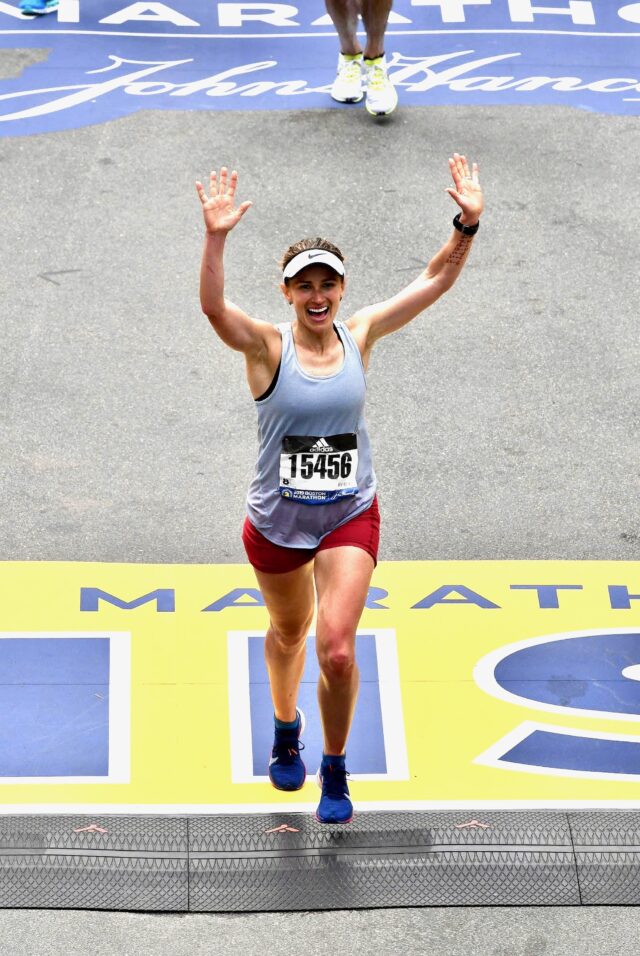

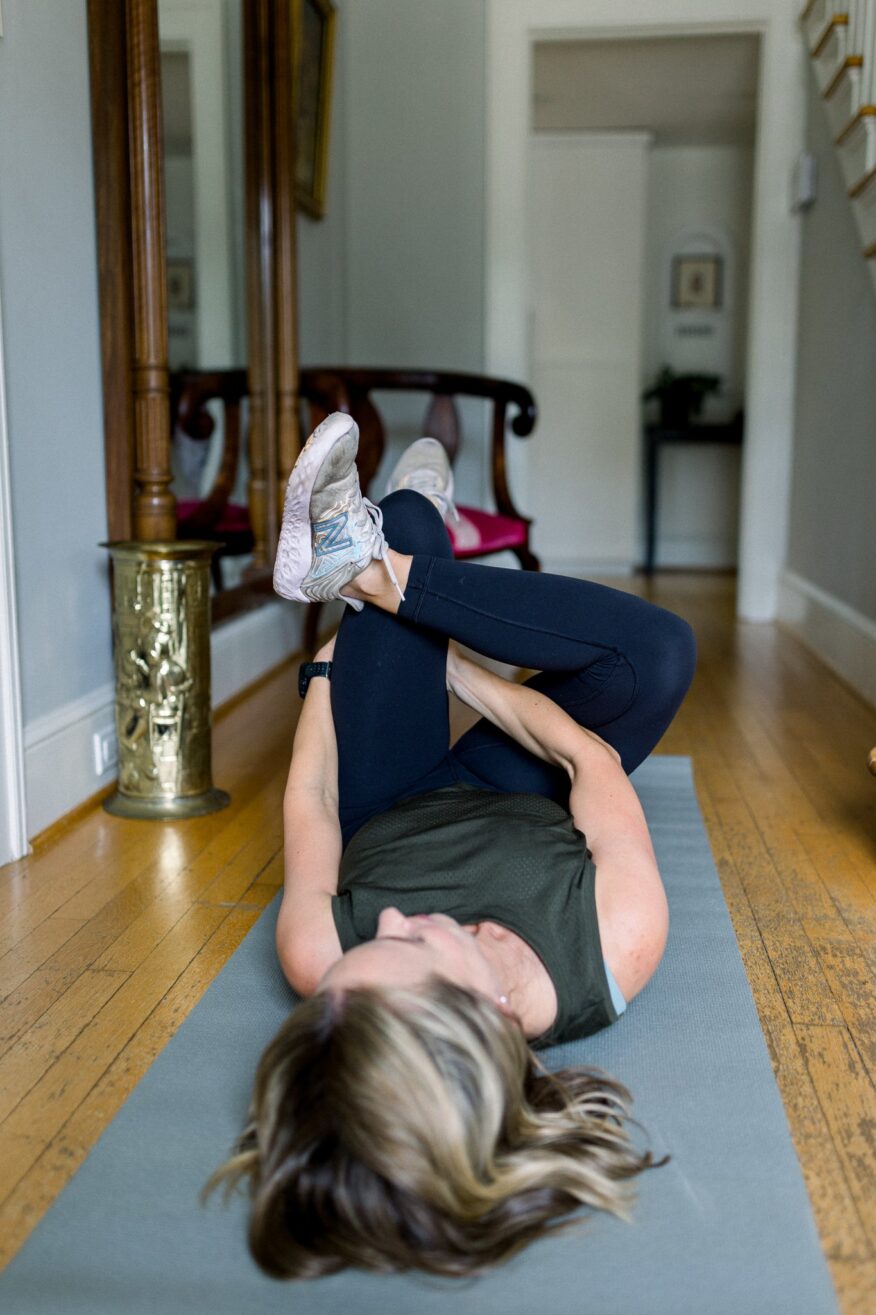
Here’s the truth – I’m REALLY good at following a training plan. When I had a running coach, if he uploaded a workout into Training Peaks, I did it. What I’m not so good at? Recovery. I KNOW it’s important and I tell every new runner to prioritize it, no matter their fitness level. But, I’m not so good at prioritizing it myself. I’ve experienced a lot of running injuries over the years. Some of them were simply due to over use and could’ve been prevented with proper recovery.
Working in regular recovery activities will help you continue to run long and/or fast–– and do it LONG TERM with fewer injuries. And while it may seem counterintuitive, if you run hard every day and neglect recovery, you will limit your potential. Truly. Not only will you be able to run harder on your hard days if you recover properly, less time injured means less time spent trying to come back from an injury.
So today, I’m sharing tips to help you recover after a long run (or any type of workout, really) and some tips to help make it a habit! I feel so strongly about recovery that I dedicated an entire lesson to it in my online running course.
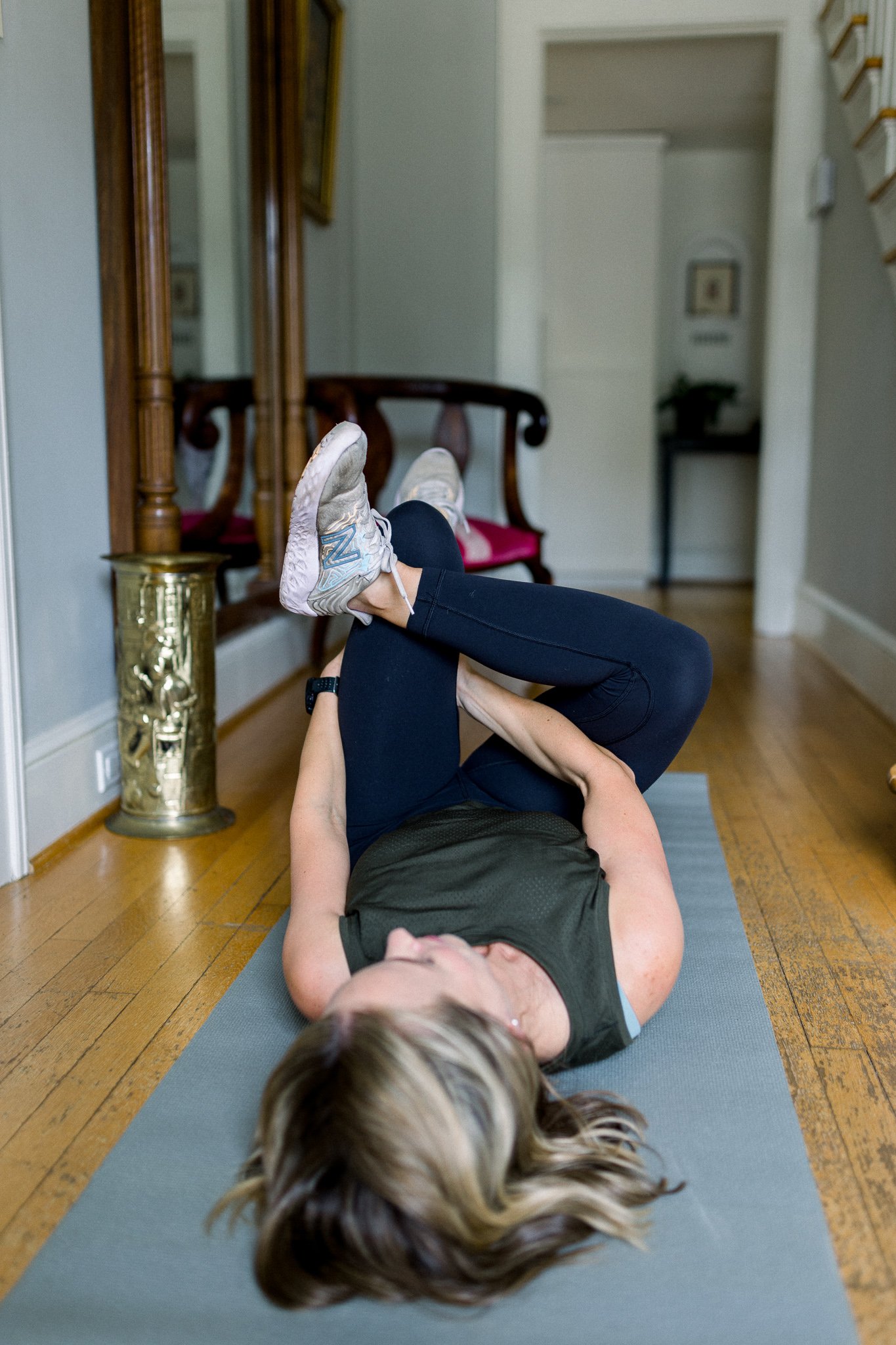
Make sure to eat within 30 minutes of finishing a run. If I know I won’t be able to get a meal right away, I make sure to have some kind of bar with protein, fat, and carbs. My two favorite bars are Picky Bars (save $10 off your first order with this link) and RX Bars (cheapest at Costco and Trader Joe’s). I often hit the farmers market after my Saturday long run so I make sure I always have one of those in my gym bag until I get home for a real meal.
If you can get a real meal right after your run, that is always better than a bar. I especially love sweet potatoes after a run since they’re so versatile and they don’t upset my stomach. An egg and veggie scramble with potatoes or toast is another go-to combo post-run. But on days that I do NOT feel like eating (usually after a super hot run), a smoothie or acai bowl does the trick. While there are some recommended macro ratios, don’t worry about the perfect post-run meal – just get some mix of carbs, protein and fat! I also recommend some chocolate milk if you tolerate dairy. And make sure you are fueling your body well the rest of the day as well. Here are 20+ ideas for what to eat after a run.
Bottom line: don’t skip carbs! Carbs are incredibly important for runners!! And don’t forget to eat pre-run as well! The energy balls in this post are my go-to pre-run snack.
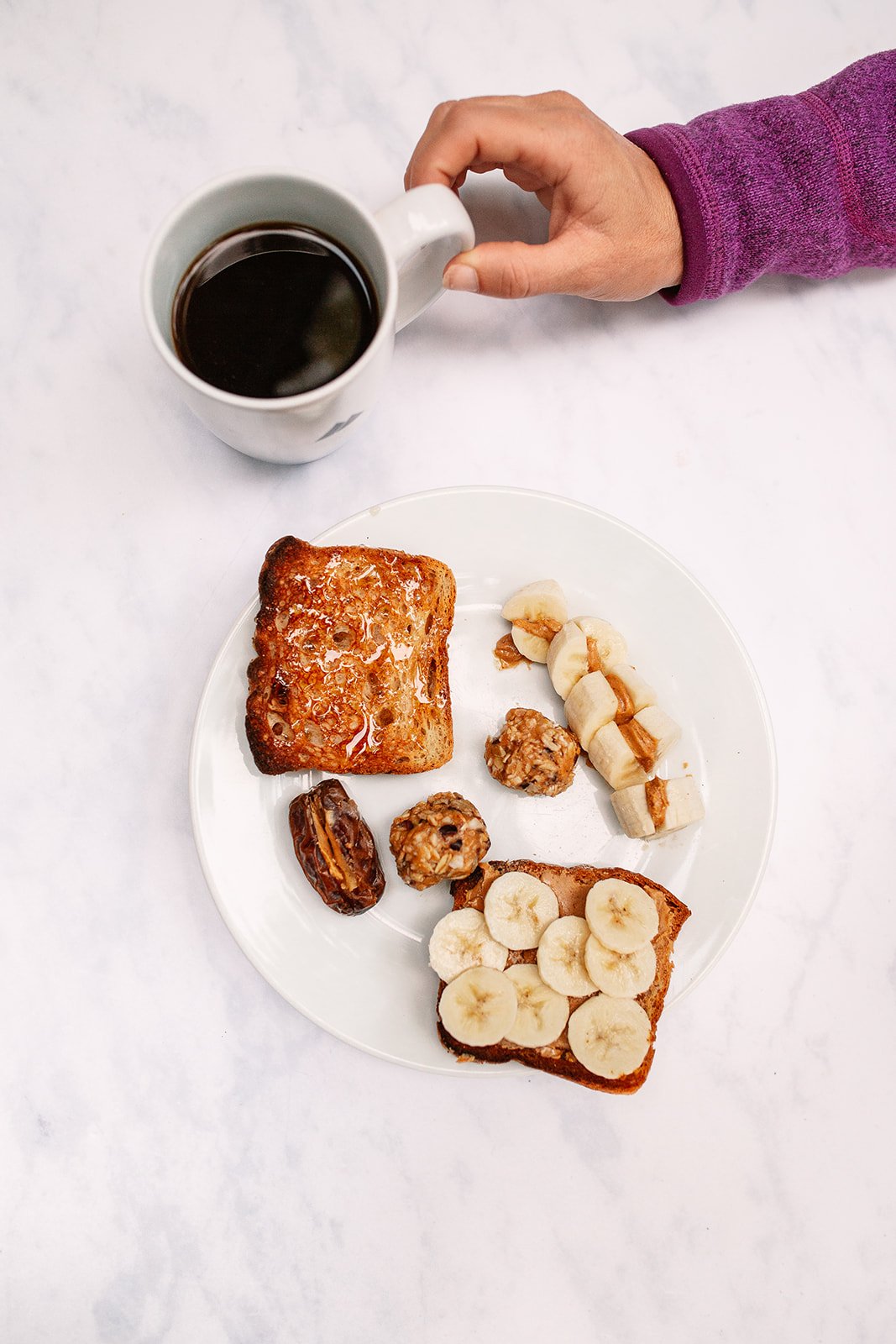
The majority of people run their recovery runs far too fast, so they’re not actually recovery runs. That can lead to injuries and/or overtraining syndrome. And I know… you’re thinking, “I do run slowly!” But you’re probably not running slow enough. And you’re probably not doing enough runs at recovery pace. Try running with a slower friend that can create the pace if you need some accountability. Or leave your GPS running watch at home if too much data prevents you from slowing down. Your heart rates should be lower than on your fast runs.
Let me give you some reference:
My race pace in the 2019 Boston Marathon was 7:30 minutes per mile, my half marathon pace is around 7:00 per mile, and for a 5k it’s around 6:30 per mile.
Want to know what my recovery pace is? 8:45 – 9:30. And sometimes my first mile of a recovery run is around 9:45 – 10:30. So we’re talking 2-3+ minutes per mile slower than race pace.
When training for Boston, 3-4 runs per week were easy, recovery runs. I had 2, sometimes 3, hard efforts per week, including my long run. More of your miles should be at recovery run pace than anything else.
If you slow down your easy days, you’ll not only run faster and feel better on your workout days, but also get to race day or a hard workout feeling like you are ready to go. And you want to know the best way to get a PR? Not show up on race day overtrained or injured. My running coach, Enoch, shared more about WHY recovery runs are so important for your body in this post and how to run them off effort rather than a specific pace.
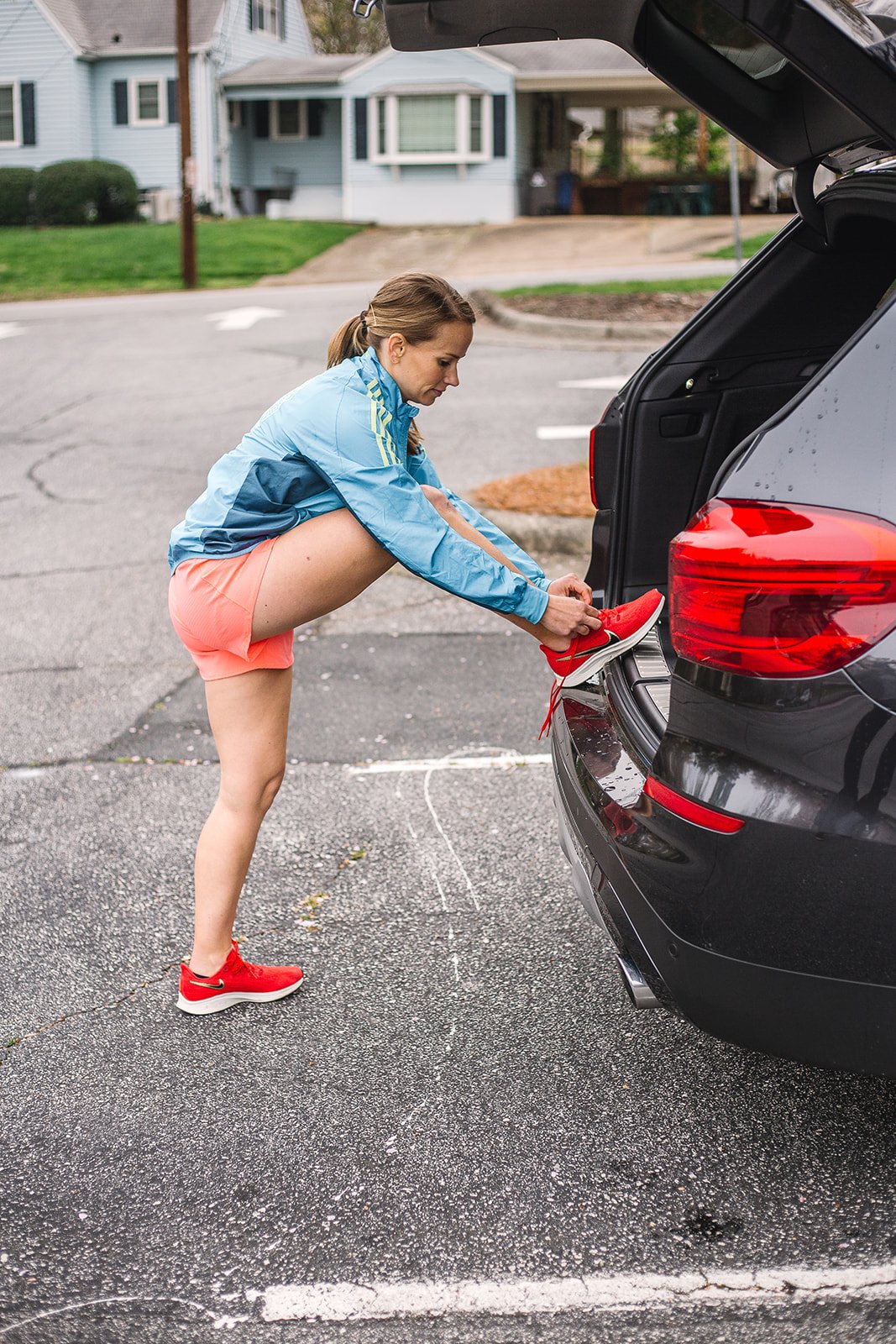
When I was training for Boston, I got massages about every two weeks. Yes, it was expensive, but I figured it was cheaper than going to dry needling twice a week.
Let me be clear – my massages are NOT relaxing. They are intense and often very uncomfortable. But they made a big difference in my training so my body could adapt to higher mileage. When training for Boston, I ran 50-60+ miles a week and a few times hit over 70 miles a week. Regular massages might not be realistic, but even once a month is better than nothing. (If you’re in the Winston-Salem area, I can’t recommend Ger Browne enough.) While these massages are not relaxing, they help reduce muscle soreness, break up knots and help address small issues before they turn into big issues.
I’m also a big fan of the Hypervolt for my calves, glutes and quads. It has different attachments to massage and four levels of intensity, which can be…quite intense. But it also feels great and helps improve blood flow.
I try to use the foam roller or the Roll Recovery almost every day, which helps to flush out any tight spots. I use the Roll Recovery before I run to help me warm-up, stretch for five minutes after a run and typically foam roll later in the day. And I always put it off, but once I start, I enjoy it and end up doing more than I planned. If I don’t do this everyday, I still try to do it about 4-5 days a week.
What helps me stick to post-run stretching every day (or close to it!) is setting a timer for 5 minutes, usually just on my Garmin after I get home from my run. I change areas every 30 seconds and usually end up stretching a little longer than 5 minutes. And you bet I save that as a workout and upload it to Strava. And I do the same thing with foam rolling.
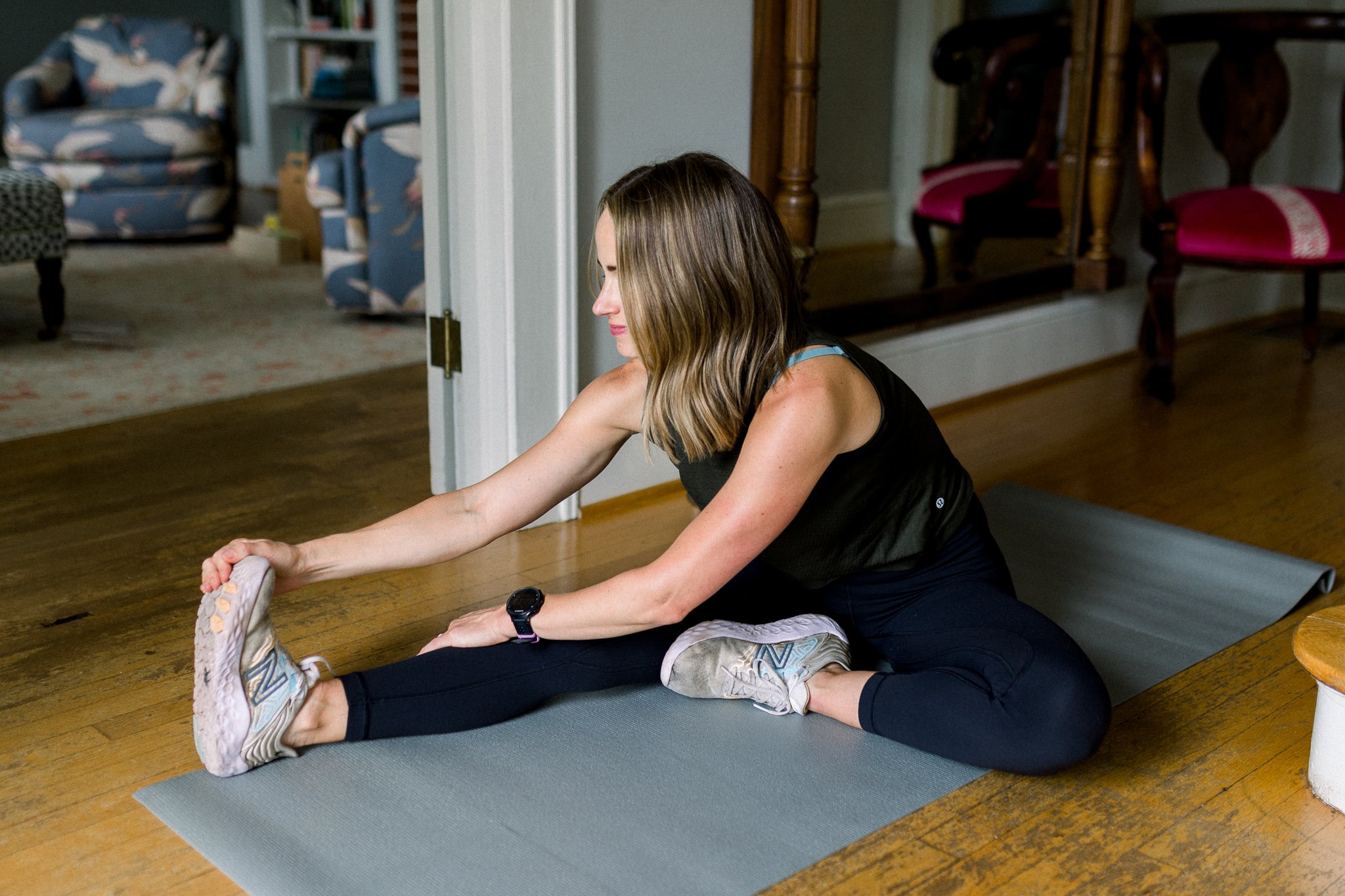
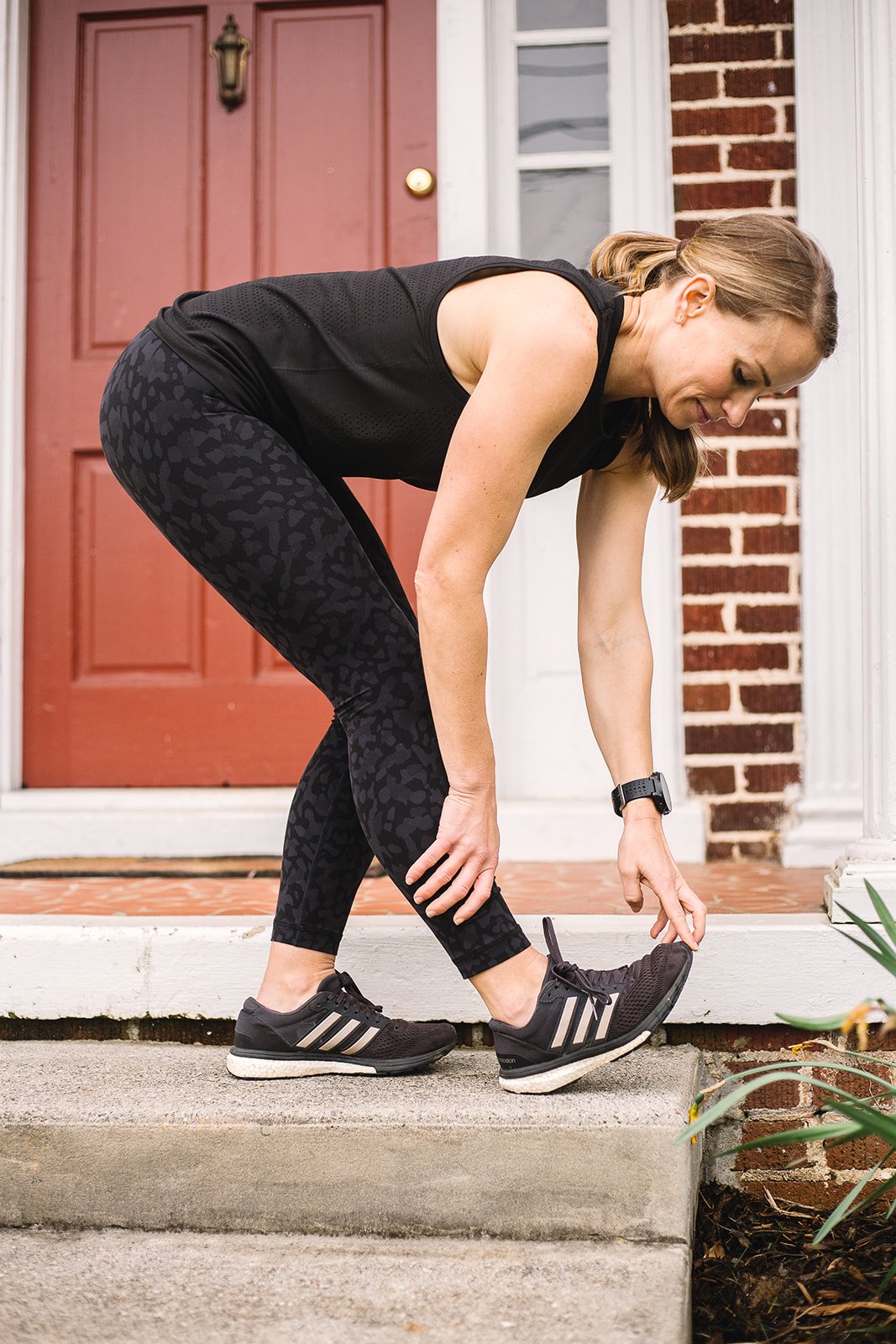
Five minutes may not seem like a lot but if you stretch for 5 minutes after 5 runs a week, that’s 25 minutes of stretching. Same for foam rolling. And 5-10 minutes a day is a LOT better than none. And if you REALLY don’t have time to fit this in post-run, end your run 5-10 minutes early. There ya go – I just gave you recovery time to fit it in!
This is the foam roller I have and this is the foam roller I want — the vibrating option sounds awesome!
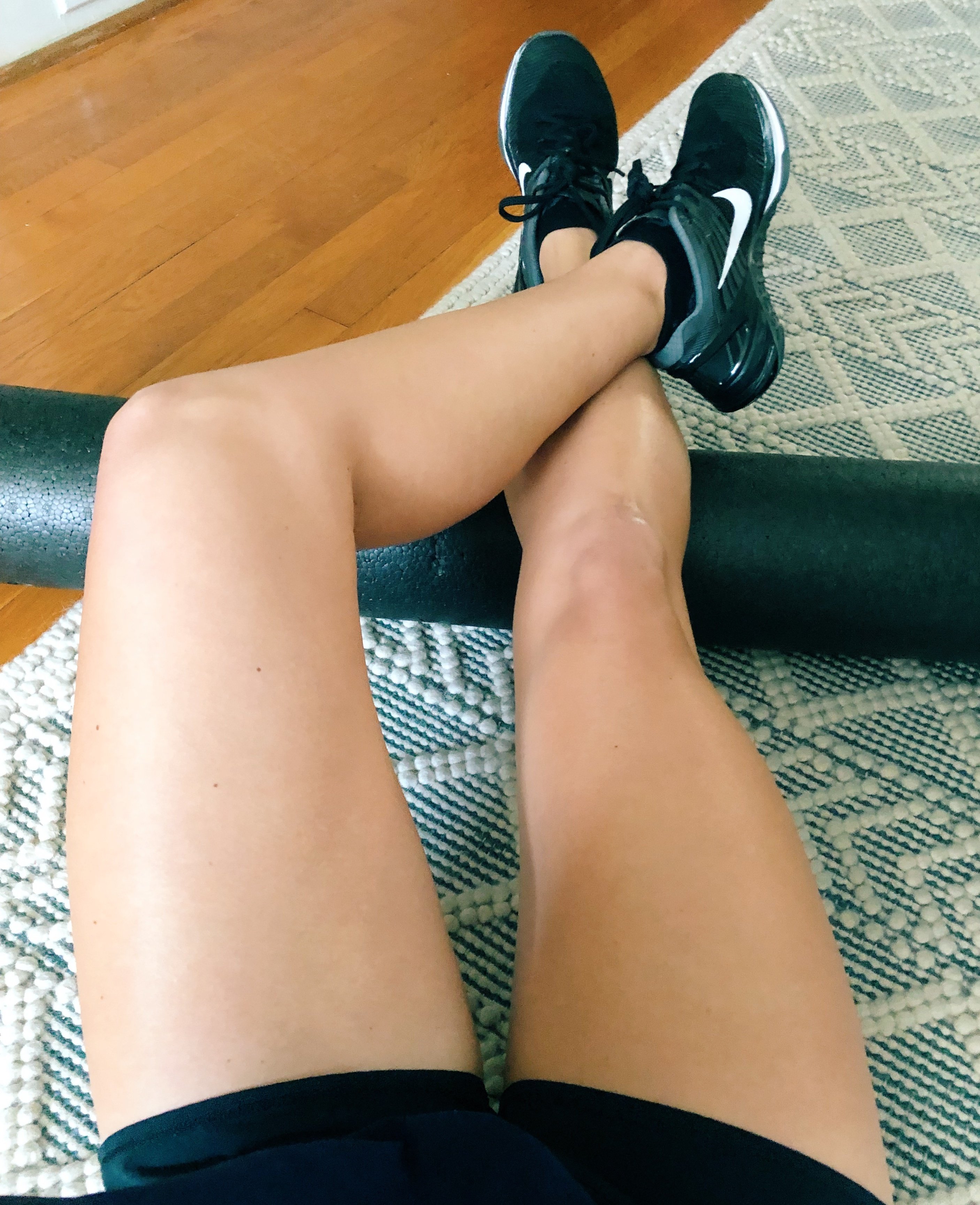
Nike Metcons (for strength days) | foam roller | lululemon speed up shorts (I wear size 4)
As far as topical products go for sore muscles, I’m a HUGE fan of the Recovery Roll-On by Equilibria. It’s a topical CBD that you can apply to any spot that’s inflamed or sore. I loved their Relief Balm before the roll-on came out, but the roll-on is the BEST because you don’t have to get the balm all over your hands. The Recovery Roll-On also contains 750mg of CBD versus the 500mg in the Balm, so you get faster relief AND a cooling sensation from the white willow bark extract and menthol they included in the roll-on. It’s similar to IcyHot but has better ingredients and doesn’t smell so strongly (I hate the smell of IcyHot). And since the Recovery Roll-On contains CBD, you get an amazing blend of pain relief and muscle relaxation.
I use it on my ankles, knees, and sometimes feet. Wherever I’m dealing with some pain from a long run. The formula is non-greasy and fast absorbing and I’m seriously obsessed. I use it on my lower back before my period too!
You can read more about my experience with Equilibria CBD in this post. Take 15% off your first order with this link and code “afoodiestaysfit”.
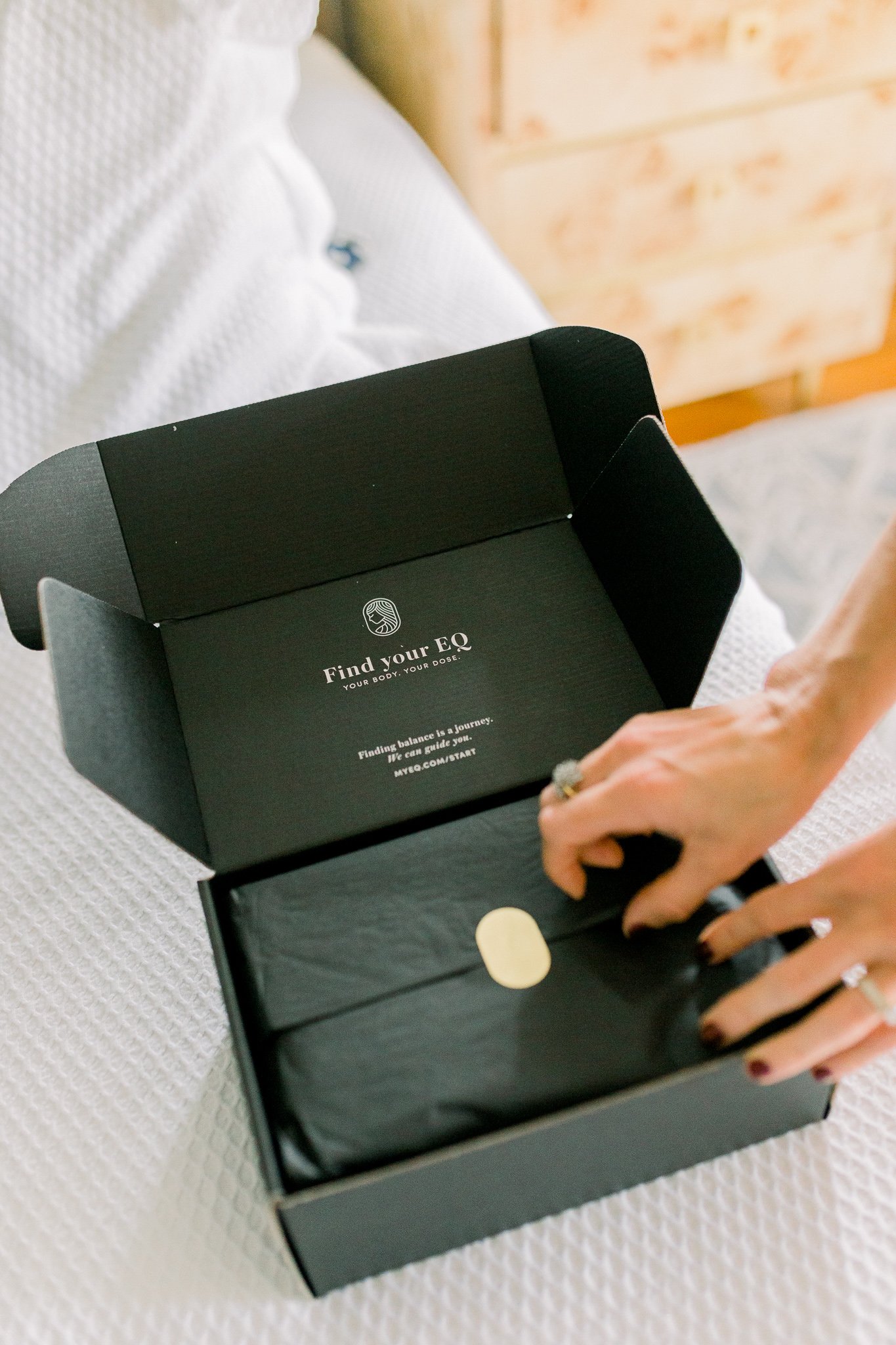
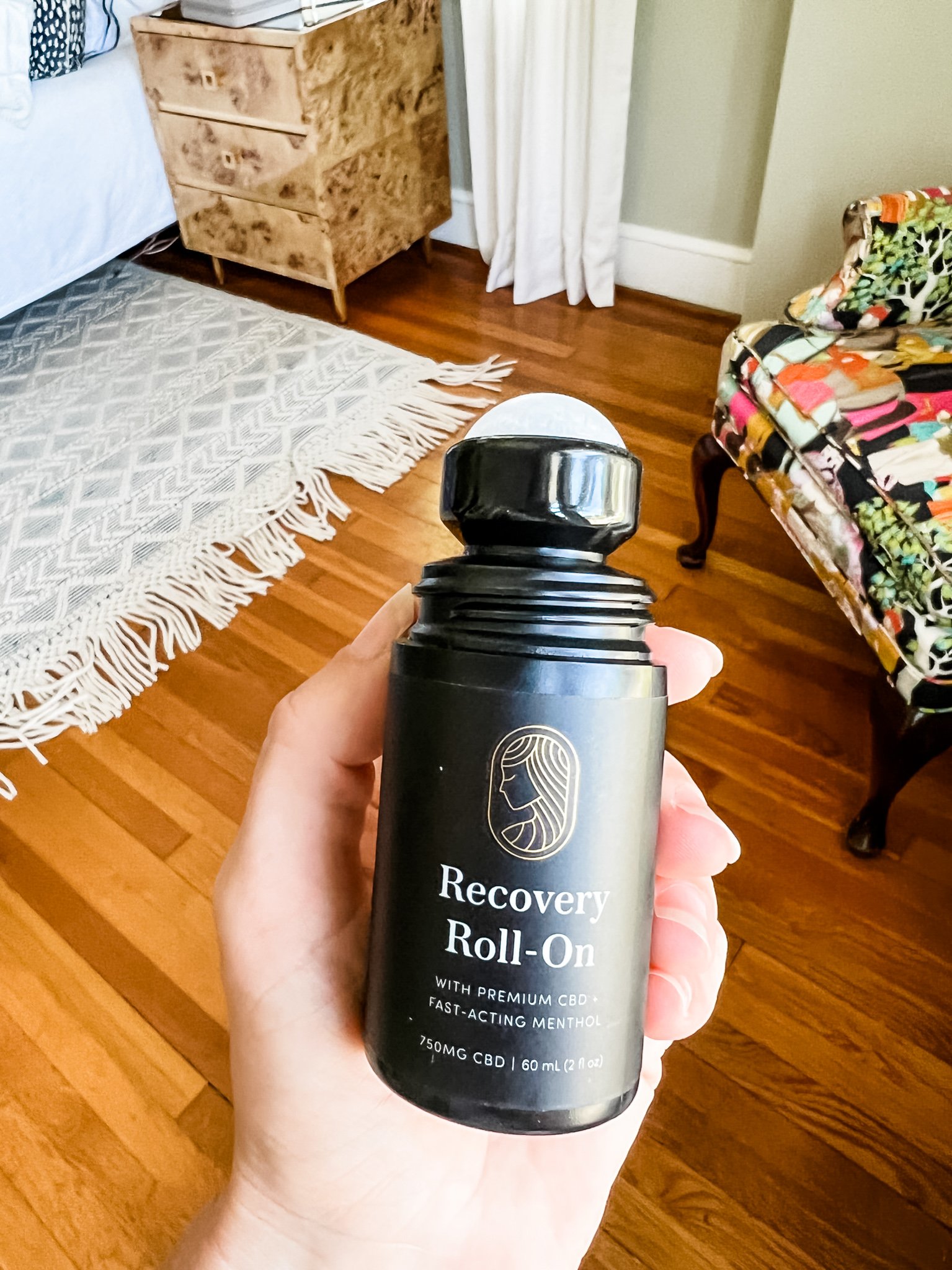
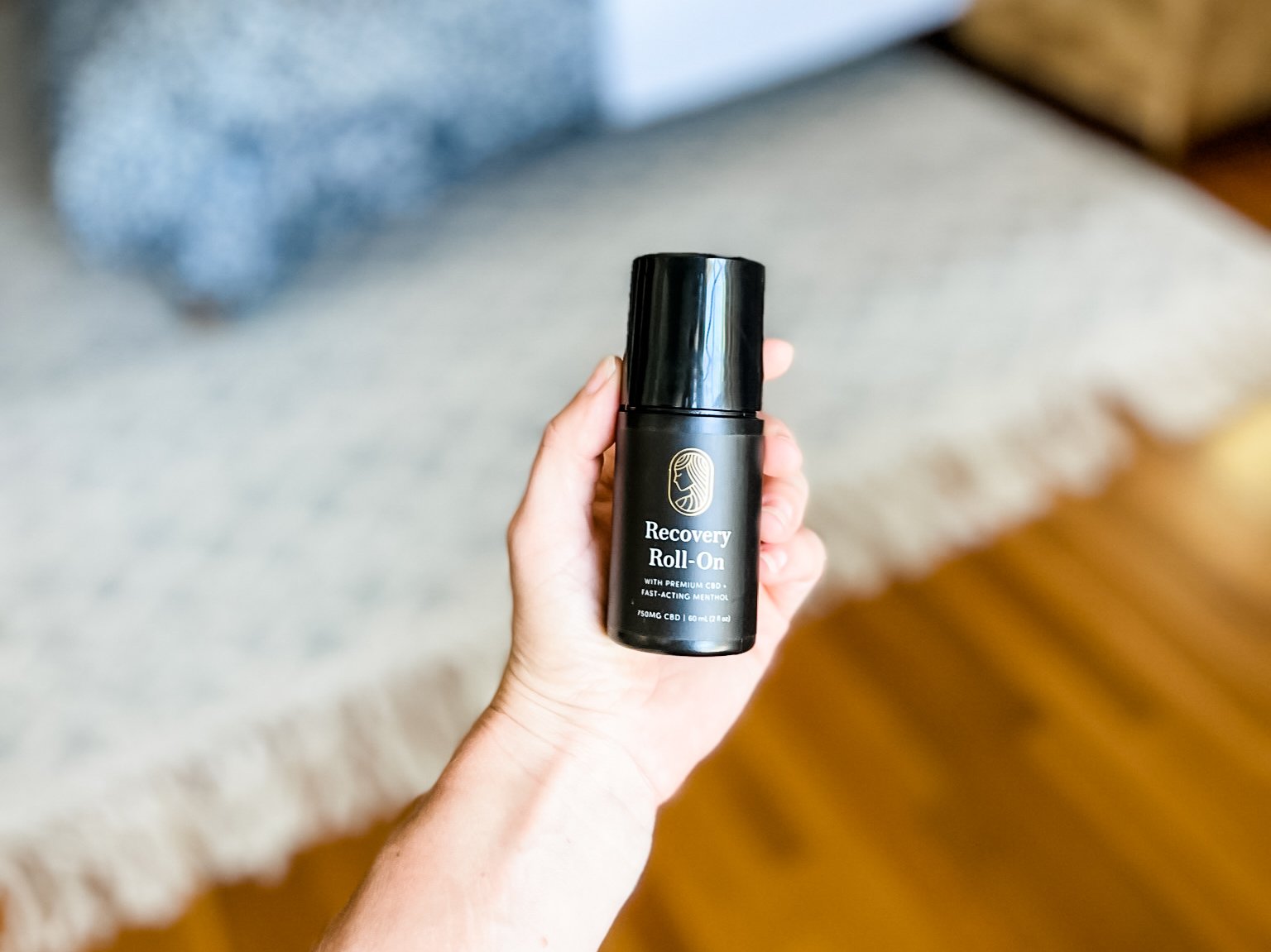
When you are training for a big race, it’s important to look at your training at the macro level. If you are planning to run three races in a year, make sure you have a period where you are running fewer miles and fewer structured miles (i.e. no workouts, intervals, specific paces or distances, etc.). You have to make sure your recovery period is substantial.
Aside from giving your body a break, your mind also needs time to recover. I was in training mode from December through June with three races (Boston, Boulder, American Fork) on my calendar that didn’t give me enough downtime in between. As a result, I showed up to the half marathon in June super burned out and apathetic about race day. And that later led to an injury that has persisted for over a year.
My coach talked to me about how my race plans would likely be all too much, since he knows how I put pressure on myself, and he was really good at adjusting my workouts to keep my body fresh. But, the one things he couldn’t change was the pressure I put on myself. So that means that it’s really important is to know yourself and listen to your body. I didn’t really push myself in the BolderBoulder 10K or the American Fork Half on race day, but the grind of being in training mode took a toll on me. And months and months of uninterrupted training impact me more than 1-3 specific race days.
And FYI, my coach forced me to take a break after the half marathon. He turned off my training plan. 🙂 Cross training became my best friend!
I saved the best and most important for last.
Sleep is one of those things that I know is important but I haven’t always prioritized it. But, I truly function so much better with at LEAST 7 hours of sleep. My husband and close friends will tell you that I’m a bit of a nightmare when it gets close to bedtime if I can’t start to wind down and head to bed. I truly start to panic – sleep is THAT important to me. One of the things that’s helped me the most recently is our baby sleep consultant (changed our lives after Thomas wouldn’t sleep for a few months. Use code Teri10 for 10% off.) and taking CBD at night. See the rest of my sleep must-haves here.
Aside from sleep deprivation causing me to be a jerk, more and more research is showing that the BEST tool in any recovery process is SLEEP. More than any foam roller, ice baths, supplements, whatever. So if you can’t afford to buy any of the tools or simply don’t want to, just SLEEP.
Turn off the TV. Put your phone away. Take note of where you’re spending time that is preventing getting 7-8 hours a night. And then decide if your running goals are more important than whatever else you’re doing.
How do you recover from running?
Shop the Post


Leave a Comment
One response to “7 Tips to Recover from a Hard Workout”
Running is my favorite form of cardio, why? Because it is a simple way to fit in a great cardio workout, is has minimal equipment and I can get outside to enjoy the day. My recovery is the best part of my day. What I tried for my recovery was getting a massage tool. What is great about it is you can control the pressure and the intensity level to suit your muscle soreness. I find it shocking that your worst part is recovery. To me recovery should be a way of relaxing, decompressing and just enjoy being in the moment after a hard workout. I often consider a nice warm shower part of recovery also because of its soothing and relaxing effects on my tired muscles. Well I hope you can one day come to love your recovery, seemingly on how important it is. Good luck and great insight!